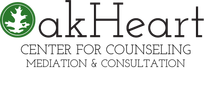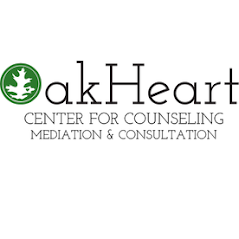What is Trichotillomania (Hair-Pulling Disorder)?Written by Elizabeth Grzan, MSW, LSWWhat is a Body-Focused Repetitive Behavior (BFRB)?
Body-Focused Repetitive Behaviors (BFRBs) include any repetitive self-grooming behaviors such as biting, pulling, picking, chewing, or scraping one’s own hair, lips, cheeks, skin, or nails that can lead to physical damage to the body. Often, the individual will make multiple attempts to stop or decrease the behavior but fail to do so. BFRB's fall in a category of disorders called the "Obsessive-Compulsive and Related Disorders." The most common BFRBs are hair pulling (trichotillomania), skin picking (excoriation), nail biting (onychophagia) and cheek biting. There is no one cause for BFRBs; however, there is likely some genetic predisposition which is then triggered by some environmental components. They are "among the most poorly understood, underdiagnosed, and untreated group of mental health disorders" (bfrb.org). Ultimately, there are a vast array of reasons why an individual may engage in BFRB's. Research suggests that some individuals with BFRB's are attempting to improve/correct an imperfection or physical appearance while others may be engaging in BFRB's to regulate intense emotions. Other's may be using BFRB's in response to an intense urge or "tension" without any clear rationale for why. It is important to note, that the goal for an individual with a BFRB is not to self-harm. What is Trichotillomania? According to the fifth edition of the Diagnostic and Statistical Manual (DSM-5-TR) trichotillomania is a "recurrent pulling out of one’s hair" that results in hair loss. The individual must have made repeated attempts to decrease or stop their hair pulling. The hair pulling causes significant distress or impairment in social, occupational or other important areas of functioning. There is no clear consensus on what causes trichotillomania. Some individuals will first struggle with trichotillomania at a very young age while others may start during adolescence. Both men and women can struggle with trichotillomania; however, typically 65%-80% of individuals with trichotillomania are female. Males may be statistically underrepresented as they have more areas to pull from and may be more likely to hide their hair pulling. Individuals who struggle with trichotillomania will typically pull from the scalp, eyebrows, and eyelashes, but they may also pull from other areas such as pubic hair or other areas of their body. There are times when individuals are aware of the hair pulling and are engaging focused pulling (e.g., to make something symmetrical) whereas some of the pulling is more automatic (pulling the hair when they are bored). Focused pulling may encompass rituals such as looking for hair of a specific color/texture (e.g., looking for the one gray hair or the one off colored hair to them). This type of pulling can result in long amounts of time spent on these activities. Individuals with BFRB's may also use tools/implements such as tweezers or mirrors as part of their hair-pulling ritual. The way in which they pull may also become an important part of their ritual. For example, they may attempt to ensure that the hair bulb comes is removed along with the hair strand. There are many identified antecedents to pulling including being bored, experiencing a strong sense of tension (either immediately before pulling out the hair or when attempting to resist the urge to pull), stress or anxiety, or various sensations such as a tactile sensation of something note feeling "right." (e.g., course hair). Some individuals may feel gratification, pleasure, or a sense of relief when they pull the hair. Individuals will report that before they pull that it will feel like an “itch” or a tingly sensation at the scalp that will be alleviated once the hair has been pulled. Pain typically is not accompanied by the hair pulling. Once the hair is pulled individuals will sometimes visually examine the hair or manipulate it. They may run the hair around their face or roll the hair between their fingers. Some may find it soothing to pull the hair between their teeth, biting the hair into multiple pieces or will swallow the hair. However, some individuals will just pull the hair and dispose of it. Treatment Focus The Comprehensive Behavioral (ComB) Model identifies the environmental, motoric, sensory, cognitive and affective antecedents and reinforcing consequences. This model is the most well known to combat BFRBs. Here is a very brief summary of the model: What ComB Does Identifies a range of antecedents of BFRBs Identifies a range of consequences of BFRBs Identifies a range of behavioral sequences of BFRBs Guides individual assessment of BFRBs Guides treatment plan development targeting BFRBs Guides treatment modification as required ComB has 4 Phases. Phase 1: Assessment and Functional Analysis Phase 2: Identify Potential Target Modalities Phase 3: Identify and Choose Treatment Strategies, Implementation of Chosen Interventions Phase 4: Evaluation, Modification, Relapse Prevention Potential Interventions Sensory: distraction, substitution, extinction, medication Cognitive: cognitive restructuring, coping-skills Affective: relaxation, emotive imagery, exposure, medication Motor Habits/Awareness: awareness training, response prevention, competing response training Place and Other Environmental Factors: stimulus control, contingency management References American Psychiatric Association Publishing. (2022). Trichotillomania (Hair-Pulling Disorder). Diagnostic and statistical manual of mental disorders: DSM-5-TR (pp. 282–285). Body-focused repetitive behavior: BFRB: BFRB awareness. TLC Foundation for Body-Focused Repetitive Behaviors. (n.d.). https://www.bfrb.org/your-journey/what-is-a-bfrb#:~:text=Body%2Dfocused%20repetitive%20behaviors%20(BFRBs,stop%20or%20decrease%20the%20behavior. Comments are closed.
|
OakHeart
|
- Home
- Counseling
-
Specialties
- Depression
- Bipolar Disorder
- Anxiety Disorders >
- Obsessive-Compulsive Disorder (OCD)
- Eating Disorders
- Grief and Bereavement
- ADHD
- Maternal Mental Health
- Infertility, Miscarriage, and Neonatal Loss
- Domestic Violence and Sexual Assault
- Posttraumatic Stress Disorder (PTSD) >
- Trauma
- Non-Suicidal Self-Injury (NSSI)
- Substance Use Disorders (SUD)
- Anger Management
- Insomnia
- Divorce Recovery
- Relationship Concerns and Couples Counseling
- Self-Esteem
- Therapy for Therapists
- LGBTQA+ Support
- Faith-Based Counseling
-
Providers
- Erin Mitchell
- Pamela Heilman
- Katie Sheehan
- Hillary Gorin
- Lee Ann Heathcoat
- Adam Ginsburg
- Megan Noren
- Sarah Williams
- Christina Bieche
- Bridgette Koukos
- Laura Lahay
- Kate Nash
- Anna Perkowski
- Alma Lazaro
- Leah Arthur
- Marissa Vogrin
- Erin Blair
- Amy Jakobsen
- Lizzy Lowe
- Tony Fasano
- Gerry Lawm
- Vanessa Osmer
- Kat Harris
- Locations
- Contact
- Treatments
- Employment
- FAQ and Notices
- OakHeart Blog
- Administrative and Leadership Team
- Mental Health Resources
- Divorce Mediation
- Professional Consultation
|
|




